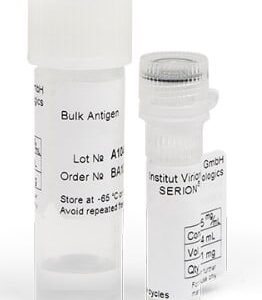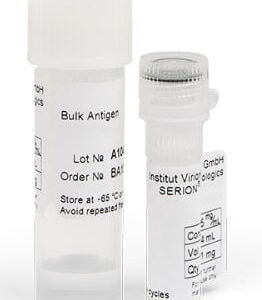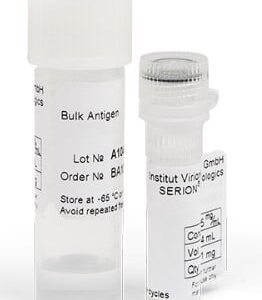| Weight | 1 lbs |
|---|---|
| Dimensions | 9 × 5 × 2 in |
| target | Influenza A immunoglobulins |
| species reactivity | Influenza A |
| applications | CFT (Complement fixation test) |
| assay type | qualitative |
| available size | 1 mL |
Influenza A Virus Pool (Control Antigen) 2112
$75.00
Summary
- Virion/Serion Immunologics Antigen for research use (RUO)
- Cost-effective due to standardized reagents
- Lyophilized antigens, control antigens as well as positive and negative control sera simplify storage
- Suitable screening test to identify acute infections
- Compensation of seroprevalences allow high specificity
Influenza A Virus Pool (Control Antigen) 2112
| kit |
|---|
| Research area Infectious Disease |
| Storage Store at -65°C. Avoid freeze/thaw cycles. Sonicate before use. |
| Associated products Coxiella burnetii Phase 2 IgG Control Serum (BC1312G) Coxiella burnetii Phase 2 IgM Control Serum (BC1312M) Coxiella burnetii IgA Phase I ELISA Kit (ESR1311A) Coxiella burnetii IgG Phase I ELISA Kit (ESR1311G) Coxiella burnetii IgG Phase II ELISA Kit (ESR1312G) Coxiella burnetii IgM Phase II ELISA Kit (ESR1312M) |
| target relevance |
|---|
| Protein names Influenza Virus A |
Data
Publications
| pmid | title | authors | citation |
|---|---|---|---|
| We haven't added any publications to our database yet. | |||
Protocols
| relevant to this product |
|---|
Documents
| # | ||
|---|---|---|
| Please enter your product and batch number here to retrieve product datasheet, SDS, and QC information. | ||
Only logged in customers who have purchased this product may leave a review.
















Reviews
There are no reviews yet.